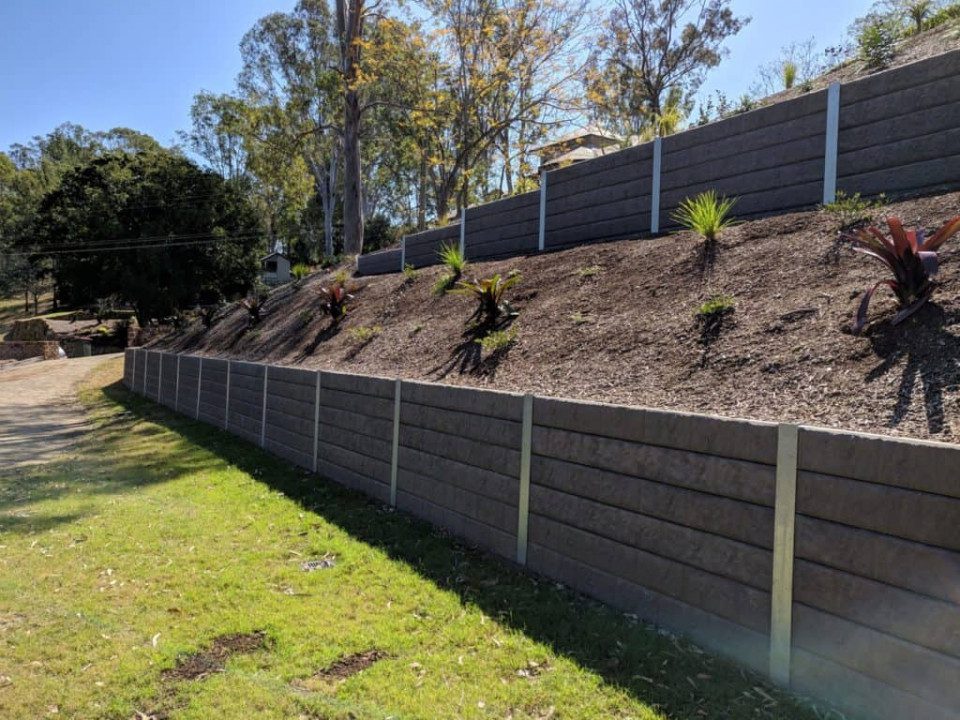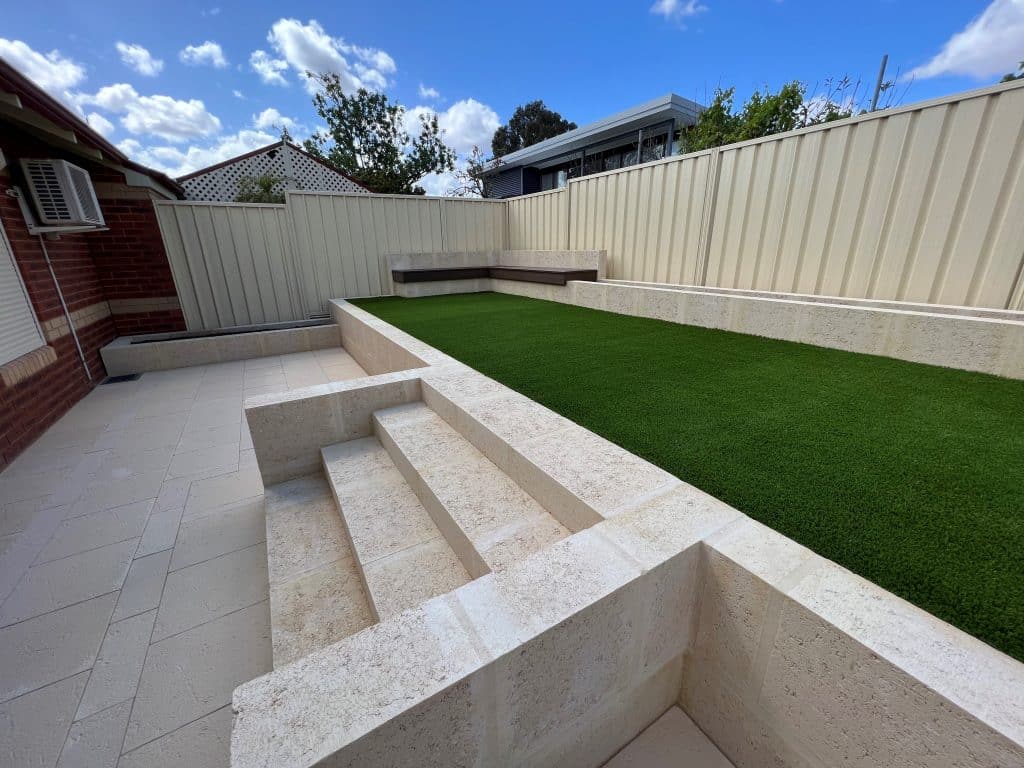Retaining Wall Surfaces Sunshine Coast: Innovative Solutions for Erosion Control
Retaining Wall Surfaces Sunshine Coast: Innovative Solutions for Erosion Control
Blog Article
Making Certain Architectural Integrity: The Importance of Properly Created Retaining Walls in Preventing Slope Failing
In the realm of civil design and building, the significance of properly created keeping wall surfaces in avoiding slope failing can not be downplayed. By exploring the complex interplay in between these aspects, a much deeper comprehension of the crucial role that preserving wall surfaces play in preserving structural honesty and avoiding incline failing arises.
Role of Retaining Walls in Security
The necessity of keeping wall surfaces in ensuring slope stability is extremely important in civil engineering techniques. Retaining walls offer a vital role in stopping dirt erosion, handling water drainage, and maintaining the architectural honesty of slopes. By supporting upright or near-vertical grade modifications, retaining walls assist to rearrange side stress put in by the dirt, therefore lowering the threat of incline failure.
One trick function of retaining walls is to counteract the force of gravity acting upon the soil mass behind them. This is accomplished via proper layout and building, which takes into consideration variables such as dirt kind, wall surface height, drainage provisions, and prospective surcharge tons. By properly keeping soil within defined boundaries, these structures help to stabilize slopes and prevent landslides.
In addition, preserving wall surfaces add to the aesthetic appeals of landscapes while supplying functional benefits. They can develop terraced degrees for landscape design, assistance highways or frameworks on hills, and improve the general usability of sloped terrain. Essentially, preserving wall surfaces play a crucial function in preserving slope security and guaranteeing the security and longevity of civil design tasks.
Aspects Influencing Wall Surface Performance
Aspects that influence the effectiveness of preserving wall surfaces consist of dirt properties, wall surface style, and external lots. Soil homes play an essential role in establishing the stability and performance of a maintaining wall. Elements such as soil type, cohesion, internal friction angle, and groundwater conditions can impact just how well a wall surface maintains the dirt behind it. The layout of the maintaining wall is an additional essential variable that affects its performance. Proper wall layout thinks about factors like wall surface elevation, wall kind (e.g., gravity walls, cantilever walls), support products, drain systems, and construction methods to ensure the wall can withstand the side stress put in by the preserved soil. Furthermore, exterior loads, such as additional charge loads from nearby frameworks or traffic, seismic pressures, and water stress, need to be thoroughly examined during the design and building and construction phases to make certain the wall can appropriately resist these outside pressures. By considering these elements adequately, designers can construct retaining walls that effectively avoid incline failing and make sure long-term structural integrity.
Layout Considerations for Keeping Walls
Including the essential facets of soil properties and external lots into the structural layout process is important for developing effective preserving walls that ensure incline stability. When designing preserving wall surfaces, engineers need to very carefully assess the characteristics of the bordering soil, including its water drainage, type, and compaction homes. Recognizing these soil properties is vital for identifying the ideal wall elevation, thickness, and support required to endure the side pressure put in by the dirt mass.
Moreover, outside lots such as surcharge tons from neighboring frameworks or web traffic, along with seismic forces, should be taken into consideration throughout the design phase. These lots can substantially influence the stability and performance of a maintaining wall, requiring the usage of proper layout strategies and materials to reduce prospective failing threats.
Furthermore, the option of appropriate materials, such as concrete, rock, or timber, should align with the aesthetic demands and site-specific problems. Aspect of safety and security factors to consider, water drainage provisions, and building methods are likewise crucial elements that affect the total design and performance of keeping walls in avoiding slope failure. By carefully taking into consideration these design considerations, designers can make sure the architectural stability and long-term security of retaining walls.

Building And Construction Best Practices for Sturdiness
When constructing preserving walls for optimum sturdiness and durability, adherence to industry-standard methods and meticulous attention to information are extremely important. To make certain the sturdiness of a maintaining wall surface, appropriate website preparation is crucial.
Incorporating reinforcement methods, such as geogrids or steel bars, can boost the structural stability of the retaining wall surface and prevent potential failures. Appropriate backfilling treatments, consisting of compaction and water drainage considerations, are also crucial for the wall surface's longevity. Regular upkeep and evaluations are suggested to attend to any kind of indicators of wear, erosion, or structural issues immediately. By adhering to these building finest methods, maintaining wall surfaces can stand up to the test of time and properly prevent slope failing.
Value of Appropriate Maintenance
Routine upkeep is vital for preserving the structural honesty and functionality of retaining wall surfaces over time. To ensure that maintaining wall surfaces continue to do their intended function properly, regular assessments should be carried out to recognize any kind of signs of wear and tear.

Verdict
To conclude, preserving walls play an important function in making sure architectural stability and stopping incline failing. By taking into consideration variables affecting wall surface efficiency, adhering to develop considerations, complying with building best practices, and implementing proper upkeep, the longevity of preserving wall surfaces can be made the most of. Retaining Walls Sunshine Coast. It is necessary to recognize the importance of properly created maintaining wall surfaces in preserving stability and protecting against prospective dangers related to incline failure
Aspects that affect the efficiency of keeping wall surfaces include dirt residential properties, wall surface design, and exterior lots. Proper wall surface style considers variables like wall elevation, wall kind (e.g., gravity walls, cantilever wall surfaces), reinforcement products, drainage systems, and building and construction methods to guarantee the wall can stand up to the lateral stress exerted by the maintained soil. By taking into consideration these variables thoroughly, designers can construct preserving walls that properly prevent incline failure and make certain long-lasting architectural integrity.
Upkeep jobs may include removing water drainage systems to avoid water build-up behind the wall, repairing any type of view it now noticeable cracks or damages, and Get More Info guaranteeing that the wall surface is free from greenery that can exert pressure on the structure. By taking into consideration elements affecting wall performance, sticking to develop considerations, following building finest methods, and implementing appropriate maintenance, the resilience of maintaining wall surfaces can be optimized.
Report this page